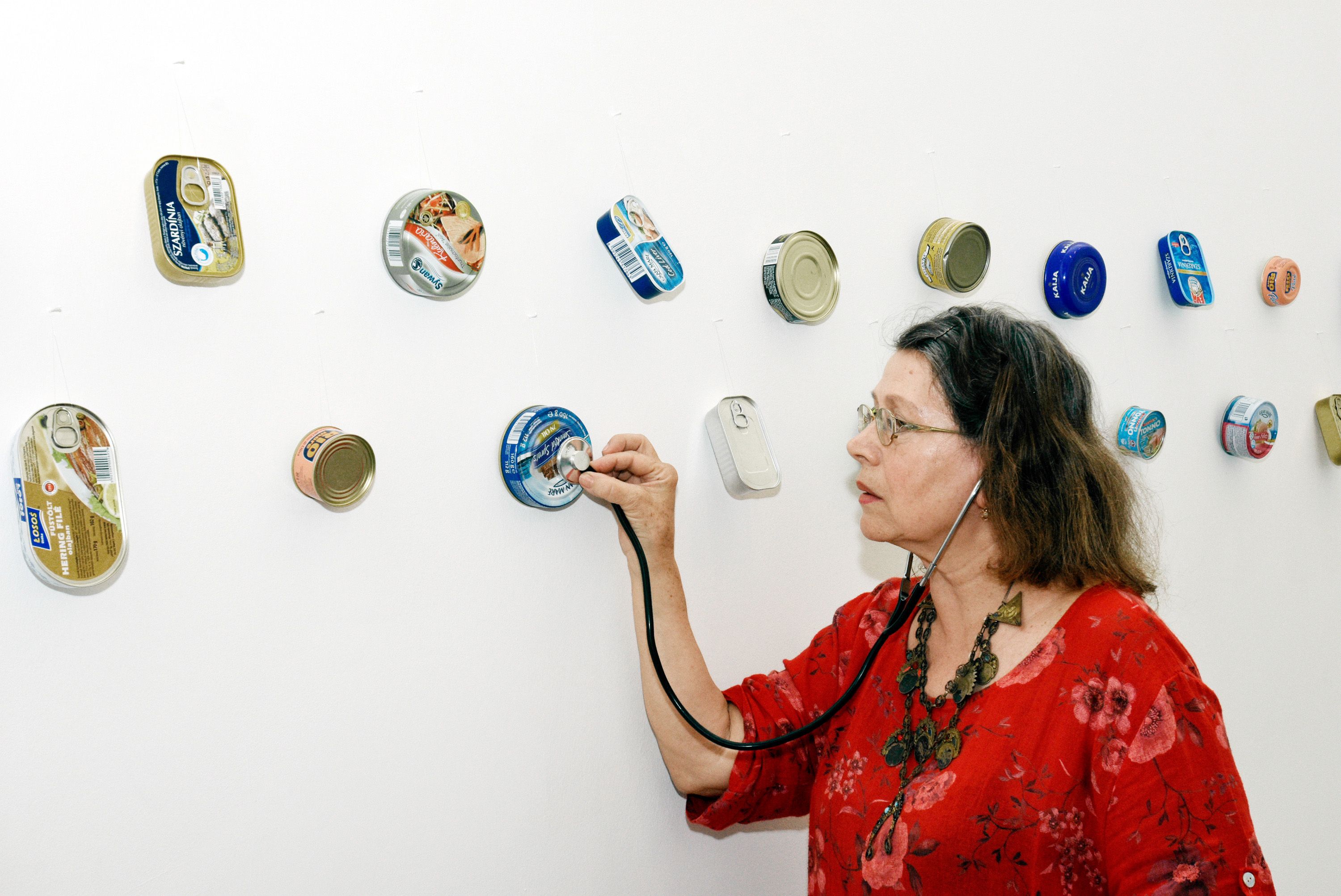Katalin Ladik
Singing Chests
| Venue: | acb NA |
| Date: | Jul 06 – Aug 24, 2018 |
Description
The acb NA’s season-ending exhibition presents Katalin Ladik’s latest sound poetry project. The antecedent of Singing Chests is a photo series resulting from the collaboration of Bálint Szombathy and Katalin Ladik, members of the Bosch+Bosch artist group, known for its commitment to conceptualism. By that time Bálint Szombathy had been dealing with the semiotic relationship of the urban environment with the signs and letters appearing in it, and he was also interested in the visual-poetic quality of found texts. Fitting into this tendency Szombathy and Ladik created two groups of works on the occasion of a common trip in 1976 to Tenerife. One of them, using the tool-kit of land art interventions and visual poetry, is a series of photos depicting inscriptions they made of found pebbles (Found Visual Poem: Pebble Letters). The visual elements of the other series are the fish crates discovered in the city port. On the crates there are various coloured characters and codes that can be interpreted as visual poems. The photo series reproduced in the monographic book of Bálint Szombathy under the title Found Visual Poem: Wooden Crates is now becoming the subject of an intermediatic reinterpretation characteristic of the practice of Katalin Ladik. The source of the series: Bálint Szombathy: Poetry – Konkrét vizuális költemények, 1969-1979, Forum, Novi Sad, 1981, 19-30, Photo: Bálint Szombathy).
As it had happened in the case of the first record of sound poetry published in Yugoslavia also in 1976, the point of departure for Ladik was also the visual poem which she interpreted as a score. It was in 2017, decades after their creation, that the artist took these works that had originally existed in the medium of slide positive and went to a sound studio with them. She used the visual scores of Singing Chests for a phonic interpretation in a free and loose manner. She assigned each of the consonants in the photos to a sound, which she sang improvisatorially, but at the same time following the score. The different sound-values of the letters, the extraordinary diapason we got used to from Katalin Ladik, and the combination of the childish and ancient phonations together shape the montage of the concrete musical opus that is also combined with found musical sounds. Along the artist’s concept, the images appear in the form of a projection in the expanded musical space.


